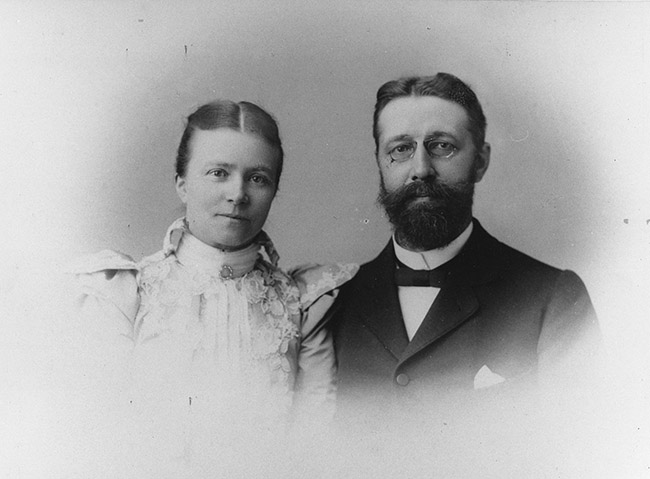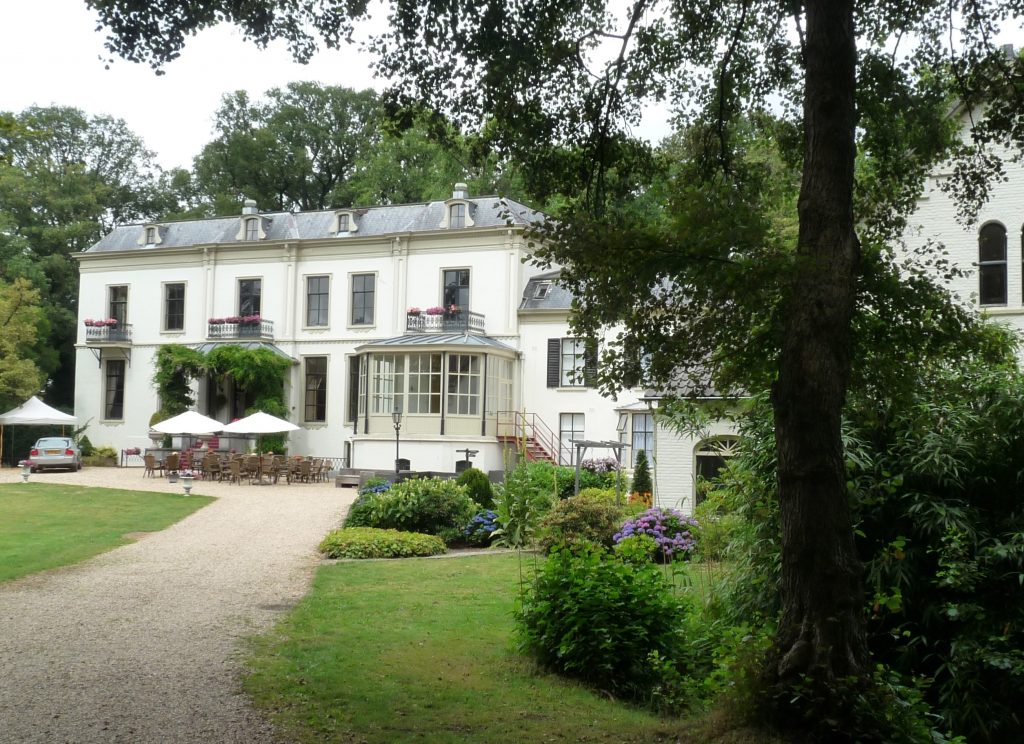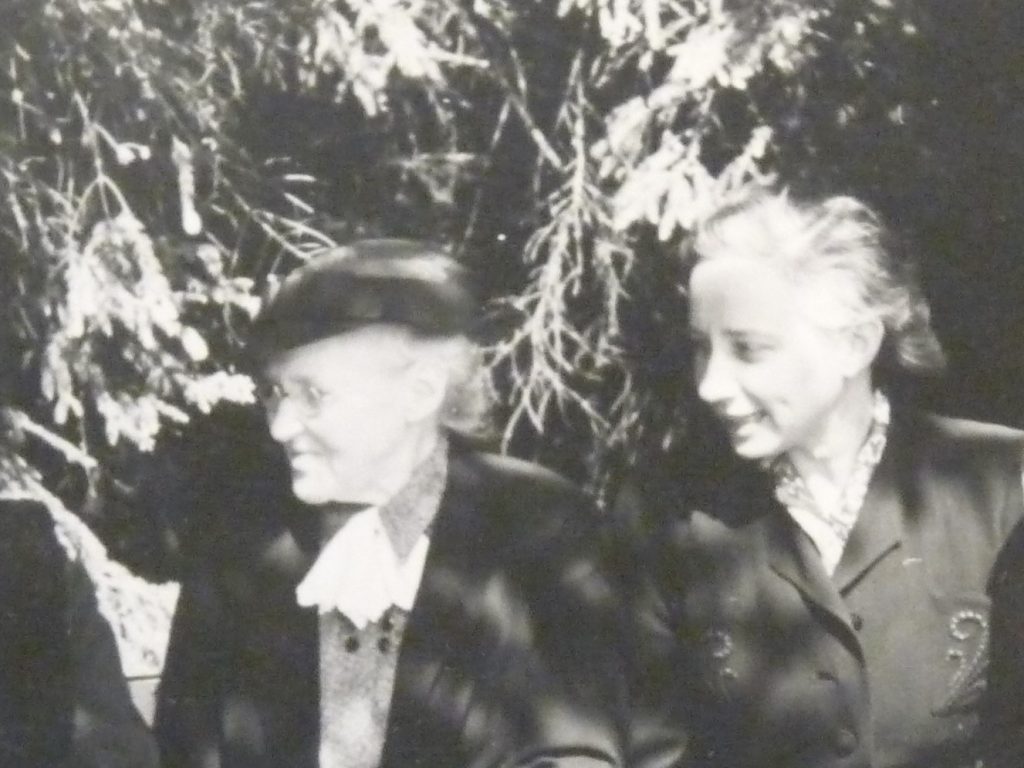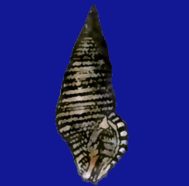Tera’s role model is Anna Weber-van Bosse (1852-1942). Anna comes from a wealthy Amsterdam family. As a child, Anna was already fascinated by plants and animals. She herself reports the trips with her governess to Artis “ Another source of pleasure was a chat with Los, the skilled gardener. He often took the young girl, who had such a great love for plants, into the greenhouses and showed her some special plants. She was also sometimes allowed to come to his sanctuary, where he weaned and took cuttings.” At eighteen she married the industrialist and amateur painter Willink van Collen. Because of his poor health, she stays with him mainly on the Riviera. That does not help and he dies seven years later. Anna is widowed at twenty-five and is going back to live with her father. In 1880 she decides to study botany at the University of Amsterdam, in order to seek some diversion. She takes courses in botany with Hugo de Vries, among other things. These lectures, in her own words, made her drunk with joy. Despite the fact that she is not allowed to take exams, because she does not have the correct previous education, she specializes in the study of algae.

At university she met Max Weber, whom she married in 1883. He has just become a professor of zoology. In the first years after their marriage, the couple undertakes many study trips together to Norway, but also to the Dutch East Indies and South Africa.
After the death of Anna’s father in 1894, the couple buys the Eerbeek estate, mainly with Anna’s inheritance from father and first husband.
In 1899 she joins the Siboga expedition, which is exceptional for a woman. Anna fishes in all those places for algae, which she identifies accurately. In the autumn of 1903 she also published “A year on board H.M. Siboga”. In this travel report, intended for a wide audience, she shows herself to be a born storyteller, with a sense of humor and the ability to put things into perspective. For example, she writes: “In the beginning it was strange to me to step into the water with shoes and stockings on, which often reached above the knees, while my long skirt, having become wet, hindered my movements. But one gets used to everything, and soon I felt at home on the beautiful reefs where there was so much for zoologist and botanist to be found.”
After the Siboga expedition, the Weber couple settled permanently on the Eerbeek estate. There they work together to further map the finds of the Siboga expedition.
On the Photo the Eerbeek estate in 2019

In the years that followed, numerous publications appeared by Anna about the algae that she collected and identified herself.
In 1910, Anna Weber became the first Dutch woman to receive an honorary doctorate, on the recommendation of the botanist F.A.F.C. Went. She is very modest about this award and her own contribution and Went writes to her: I am very sorry that excessive modesty prevents you from receiving your doctorate in person, and I have also heard from other members of the Senate that they expressed their regret about this. But they must of course respect your decision, even if I would have liked to have convinced you on that occasion that your merits in the botanical field are not as small as you yourself estimate (dd 7-2-1910; Nat. Herbarium. Ned .).
In the nineteen 30s, she is already in her eighties, her vision deteriorates and she can no longer work. That is why in 1934 she donated her collection of fifty thousand specimens to the Natural History Museum in Leiden.
Max and Anna Weber have no children. They do like to receive young students at their home. Tera’s predecessor, Mia Boissevain (1878-1959), the first Dutch woman to obtain a doctorate in malacology, already writes in her autobiography how she was invited to Eerbeek, to go out with Max and Anna, and how Max would then be knee-deep in water to fish for the deeper material. Johanna (Hans) Westerdijk (1883-1961), the first female professor in the Netherlands and a biologist, is also a great admirer of Anna Weber and stays there regularly (source: Een beetje opstandigheid, Patricia Faasse). For Tera, Anna Weber and Max and Anna’s marriage is an example. This is how you should live as a couple and that is how you should be engaged in science.
They first met in 1921. Tera writes in her diary: Mrs. Weber on stage, little busy woman. In 1922 she was invited for the first time to stay at Eerbeek. Willem is with the cart in Apeldoorn. We all go in, Weber steers the cart, we enjoyed a pleasant ride to Eerbeek. Madame is waiting for us in the driveway. Refreshments, eat, stroll in the yard. Feeding carp, id geese, ducks id., watching the oats and the beasts. Drink tea and talk about all sorts of things.
And from that moment on she has been a regular guest in Eerbeek.

As in 1923:
25 May: Baasje, Non, Schot, de Jong and I travel at 1.45 to Eerbeek. We found Bussy in Amersfoort, who recently bought a house in Baarn. eating and laughing on to Eerbeek, where Weber picks us up. Enough to eat, walked all the way and had a nice chat.
The next morning, unfortunately, Baasje has to leave for a meeting. Bussy, Non and I by bicycle, Professor, madam and the boys in the carriage to Gerrits Fles, fished despite the cold and ugly weather. The guys with bare legs went into the pond, brrr. sand dunes very beautiful. The typical beasts don’t want to come up. Bussy, Non and I over the heath to Hoenderlo and cycled back to E. via Woeste Hoeve. Bussy also has to leave in the evening.
The next day it is typical Dutch weather with pouring rain and they are alternately in Mr. and Mrs.’s lab looking at pictures and animals.
By Christmas 1926 home Eerbeek has become a second home to Tera and Mrs. W. and I decorate the Christmas tree. In the afternoon we took the car to the Uddelermeer and walked there. It’s freezing . At 7 o’clock to the church where the Sunday School celebrates Christmas.
We will certainly run into Mrs. Weber, as Tera invariably continues to call her, in the blogs to come, but first we will have coffee next time.
